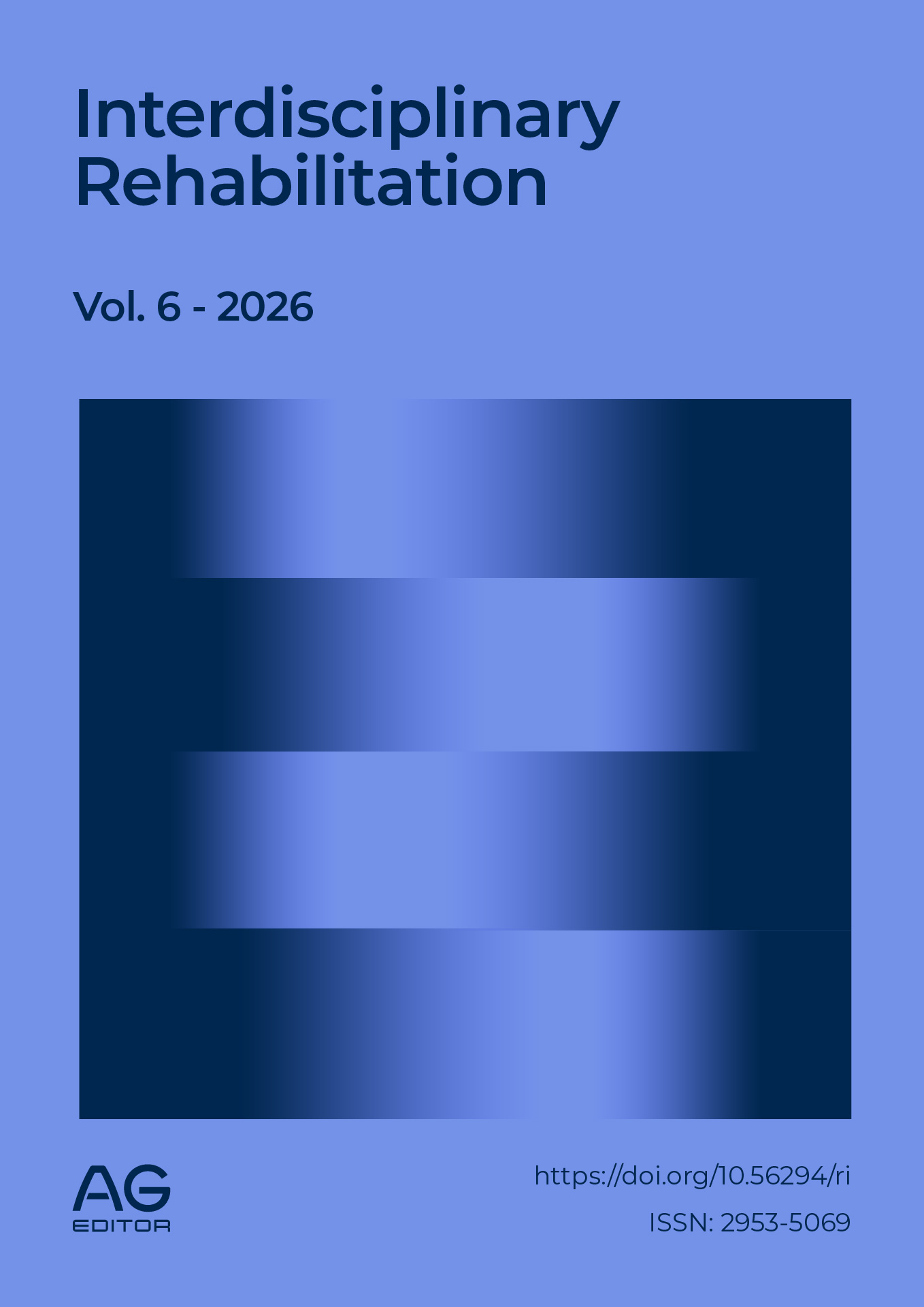Systematic review of neuroprotective actions of the ECP in the HT-22 neuronal line subjected to hypoxia and reoxygenation
DOI:
https://doi.org/10.56294/ri202615Keywords:
Ethanolamides/therapeutic use, neurodegenerative diseases/drug therapy, Hippocampus/drug effects, Alzheimer's/diagnosis, Parkinson's/diagnosisAbstract
Background: Palmitoylethanolamide (PEA) is an endogenous fatty acid amide that has recognized anti-inflammatory and analgesic actions. Given that inflammation, excitotoxicity, oxidation damage, and microvascular and blood-brain barrier dysfunction are neurodegenerative processes typical of cognitive impairment in diseases such as Alzheimer's and Parkinson's, it is considered possible that treatments with supplemental PEA can alleviate chronic pain and protect against neuronal damage. to the patient. The objective is to analyze neurodegenerative and anti-inflammatory protective actions of Palmitoylethanolamide (PEA) in murine hippocampal neuronal cell line HT-22 subjected to hypoxia and reoxygenation to apply in patients diagnosed with neurodegenerative diseases. Material and methods: The methodology applied was a systematic review of the literature, and the material used was 12 studies according to inclusion criteria. Results:Murine model and in patients focused on Alzheimer's and Parkinson's, being the effective treatment of PEA with antioxidant supplements, frequent protective action at the hippocampal level and modulation of cytokine and proteins in addition to a decrease in acetylcholine (ACh). Other neurodegenerative diseases may benefit from PEA with further specific investigations (in murine model or patients. Conclusion: Intracellular signaling under PEA and investigation into other neurodegenerative diseases should be further explored.
References
1. Keppel Hesselink JM, de Boer T, Witkamp RF. Palmitoylethanolamide: a natural body-own anti-inflammatory agent, effective and safe against influenza and common cold. Int J Inflam. 2013;2013:151028. Epub 2013 Aug 27.
2. Colizzi M, Bortoletto R, Colli C, Bonomo E, Pagliaro D, Maso E, et al. Therapeutic effect of palmitoylethanolamide in cognitive decline: a systematic review and preliminary meta-analysis of preclinical and clinical evidence. Front Psychiatry. 2022;13:1001274. Published 2022 Oct 28.
3. Young JJ, Lavakumar M, Tampi D, Balachandran S, Tampi RR. Frontotemporal dementia: latest evidence and clinical implications. Ther Adv Psychopharmacol. 2018;8:33–48. Epub 2018 Nov 10.
4. GBD 2019 Dementia Forecasting Collaborators. Estimation of the global prevalence of dementia in 2019 and forecasted prevalence in 2050: an analysis for the Global Burden of Disease Study 2019. Lancet Public Health. 2022;7(2):e105–e125. Epub 2022 Jan 6.
5. Keppel Hesselink JM, Kopsky DJ. Palmitoylethanolamide, a nutraceutical, in nerve compression syndromes: efficacy and safety in sciatic pain and carpal tunnel syndrome. J Pain Res. 2015;8:729–734. Epub 2015 Oct 23.
6. Paladini A, Fusco M, Cenacchi T, Schievano C, Piroli A, Varrassi G. Palmitoylethanolamide, a special food for medical purposes, in the treatment of chronic pain: a pooled data meta-analysis. Pain Physician. 2016;19(2):11–24.
7. Kempuraj D, Thangavel R, Natteru PA, Selvakumar GP, Saeed D, Zahoor H, et al. Neuroinflammation induces neurodegeneration. J Neurol Neurosurg Spine. 2016;1:1003–1017.
8. Kwon HS, Koh SH. Neuroinflammation in neurodegenerative disorders: the roles of microglia and astrocytes. Transl Neurodegener. 2020;9:42.
9. Guzman-Martinez L, Maccioni RB, Andrade V, Navarrete LP, Pastor MG, Ramos-Escobar N. Neuroinflammation as a common feature of neurodegenerative disorders. Front Pharmacol. 2019;10:1008.
10. Kasatkina LA, Rittchen S, Sturm EM. Neuroprotective and immunomodulatory action of the endocannabinoid system under neuroinflammation. Int J Mol Sci. 2021;22(21):11783.
11. Pardal-Refoyo JL, Pardal-Peláez B. Anotaciones para estructurar una revisión sistemática. Rev ORL. 2020;11(2):155–160. Disponible en: http://scielo.isciii.es/scielo.php?script=sci_arttext&pid=S2444-79862020000200005. Epub 2020 Oct 13. doi:10.14201/orl.22882.
12. Brotini S. Palmitoylethanolamide/luteolin as adjuvant therapy to improve an unusual case of camptocormia in a patient with Parkinson’s disease: a case report. Innov Clin Neurosci. 2021;18:12–14.
13. Brotini S, Schievano C, Guidi L. Ultra–micronized palmitoylethanolamide: an efficacious adjuvant therapy for Parkinson’s disease. CNS Neurol Disord Drug Targets. 2017;16(6):705–713. doi:10.2174/1871527316666170321124949.
14. Altamura C, Ventriglia M, Martini MG, Montesano D, Errante Y, Piscitelli F, et al. Elevation of plasma 2-arachidonoylglycerol levels in Alzheimer's disease patients as a potential protective mechanism against neurodegenerative decline. J Alzheimers Dis. 2015;46(2):497–506. doi:10.3233/JAD-142349. PMID: 25818503.
15. Assogna M, Casula EP, Borghi I, Bonnì S, Samà D, Motta C, et al. Effects of palmitoylethanolamide combined with luteoline on frontal lobe functions, high frequency oscillations, and GABAergic transmission in patients with frontotemporal dementia. J Alzheimers Dis. 2020;76(4):1297–1308. doi:10.3233/JAD-200426. PMID: 32623398.
16. Clemente S. Amyotrophic lateral sclerosis treatment with ultramicronized palmitoylethanolamide: a case report. CNS Neurol Disord Drug Targets. 2012;11(7):933–936. doi:10.2174/1871527311201070933. PMID: 22998138.
17. Palma E, Reyes-Ruiz JM, Lopergolo D, Roseti C, Bertollini C, Ruffolo G, et al. Acetylcholine receptors from human muscle as pharmacological targets for ALS therapy. Proc Natl Acad Sci U S A. 2016;113(11):3060–3065. doi:10.1073/pnas.1600251113. Epub 2016 Feb 29. PMID: 26929355; PMCID: PMC4801305.
18. Beggiato S, Tomasini MC, Cassano T, Ferraro L. Chronic oral palmitoylethanolamide administration rescues cognitive deficit and reduces neuroinflammation, oxidative stress, and glutamate levels in a transgenic murine model of Alzheimer's disease. J Clin Med. 2020;9(2):428. doi:10.3390/jcm9020428. PMID: 32033363; PMCID: PMC7074257.
19. Crupi R, Impellizzeri D, Cordaro M, et al. N-palmitoylethanolamide prevents Parkinsonian phenotypes in aged mice. Mol Neurobiol. 2018;55:8455–8472. doi:10.1007/s12035-018-0959-2.
20. Siracusa R, Paterniti I, Impellizzeri D, Cordaro M, Crupi R, Navarra M, et al. The association of palmitoylethanolamide with luteolin decreases neuroinflammation and stimulates autophagy in Parkinson's disease model. CNS Neurol Disord Drug Targets. 2015;14(10):1350–1365. doi:10.2174/1871527314666150821102823. PMID: 26295827.
21. Paterniti I, Cordaro M, Campolo M, Siracusa R, Cornelius C, Navarra M, et al. Neuroprotection by association of palmitoylethanolamide with luteolin in experimental Alzheimer's disease models: the control of neuroinflammation. CNS Neurol Disord Drug Targets. 2014;13(9):1530–1541. doi:10.2174/1871527313666140806124322. PMID: 25106636.
22. Zhang L, Tang W, Ouyang Y, Zhang M, Li R, Sun L, et al. N-palmitoylethanolamine modulates hippocampal neuroplasticity in rats with stress-induced depressive behavior phenotype. Eur J Pharmacol. 2023;957:176041. doi:10.1016/j.ejphar.2023.176041.
23. Koch M, Kreutz S, Böttger C, Benz A, Maronde E, Ghadban C, et al. Palmitoylethanolamide protects dentate gyrus granule cells via peroxisome proliferator-activated receptor-α. Neurotox Res. 2011;19(2):330–340. doi:10.1007/s12640-010-9166-2. Epub 2010 Mar 11. PMID: 20221904.
Published
Issue
Section
License
Copyright (c) 2026 Isabela Petrone Arifa, Lucas Daniel Udovin (Author)

This work is licensed under a Creative Commons Attribution 4.0 International License.
The article is distributed under the Creative Commons Attribution 4.0 License. Unless otherwise stated, associated published material is distributed under the same licence.





